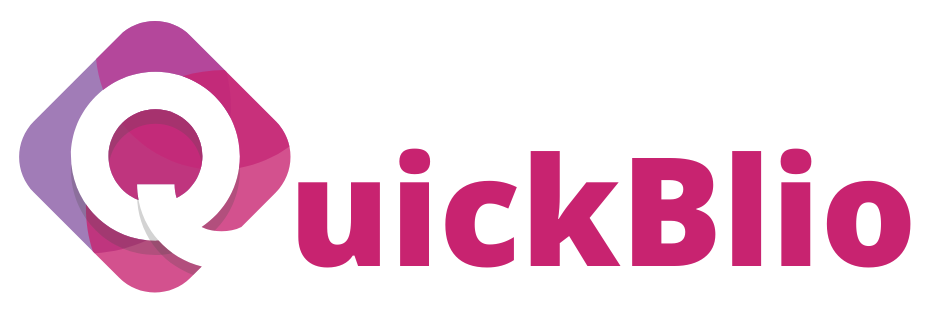Imagine a life where your bills are paid, your days are yours to design, and you can pursue your passions—whether that’s traveling, volunteering, or starting a small business—without worrying about money. That’s the essence of financial independence, where your savings, investments, or side income cover your living expenses, freeing you from the need to work full-time. No matter if you earn $30,000 or $100,000 a year, financial independence is achievable with the right steps. In 2025, with tools like budgeting apps and accessible investment platforms, anyone can build toward this freedom.
This guide outlines five practical steps to reach financial independence on any income, written in clear, simple language for those new to managing money. From budgeting wisely to growing passive income, these steps will help you take control and create a future where money supports your dreams.
What Financial Independence Means
Financial independence is having enough money to cover your expenses without relying on a traditional job. It’s about the freedom to choose how you spend your time, whether that’s working part-time, exploring hobbies, or living simply. For example, if your monthly expenses are $2,000 ($24,000/year), you might need $600,000 invested at a 4% withdrawal rate to generate that income. Unlike the myth that you need a high salary, financial independence relies on smart habits, not big earnings. In 2025, technology makes these habits easier to adopt, even if you’re starting with a small budget.
Why Any Income Can Work
You don’t need a six-figure salary to achieve financial independence. It’s about controlling what you have—whether it’s $20,000 or $200,000 a year—through disciplined saving, investing, and planning. A low earner who saves 20% of their income can outpace a high earner who spends it all. In 2025, economic shifts like inflation make it crucial to maximize every dollar, while opportunities like online side hustles or low-cost investments level the playing field. The steps below are designed to work for any income, helping beginners build wealth efficiently.
Five Steps to Financial Independence
These five steps are like building blocks, stacking together to create a sturdy foundation for financial independence. Each is simple, low-risk, and tailored for 2025’s opportunities.
Step 1: Design a Budget That Fits Your Life
Think of a budget as a roadmap for your money, guiding every dollar to where it matters most. A simple structure is the 50/30/20 rule:
- 50% for essentials: Rent, groceries, utilities
- 30% for wealth-building: Savings, investments, debt repayment
- 20% for wants: Dining out, entertainment
In 2025, apps like EveryDollar make budgeting easy. For example, cutting a $20 monthly subscription saves $240 a year, which can be invested. If you earn $36,000/year ($3,000/month), this budget allocates $1,500 to essentials, $900 to wealth-building, and $600 to wants. Even on a low income, like $24,000/year, saving $100/month by trimming small expenses builds a foundation for independence.
| Budget Structure | Percentage | Example ($3,000/month) |
|---|---|---|
| Essentials | 50% | $1,500 (rent, food) |
| Wealth-Building | 30% | $900 (savings, stocks) |
| Wants | 20% | $600 (hobbies, fun) |
Step 2: Build a Safety Net for Security
An emergency fund is your financial shield, covering unexpected expenses like car repairs or medical bills. Aim for 3-6 months of expenses—$4,800-$9,600 for $1,600 monthly costs—in a high-yield savings account offering 4% interest in 2025. Start with $20/month; $20 at 4% grows to $1,200 in five years. This fund prevents you from dipping into investments during tough times, keeping your wealth-building on track. On a low income, even $10/month adds up, ensuring you stay secure while pursuing independence.
Step 3: Invest Consistently for Growth
Investing is like planting a tree—small efforts now grow into substantial wealth later. Low-risk options like index funds or ETFs are ideal for beginners. In 2025, platforms like Schwab let you invest $50 in S&P 500 index funds, averaging 8% annual returns. For example, $100/month at 8% grows to $122,000 in 15 years, generating $4,880/year at a 4% withdrawal rate. The financial independence financial independence make1m.com millionaire life depends on steady investing to build the resources needed to cover expenses. Automate monthly contributions to stay consistent, even on a tight budget.
| Investment Options | Risk Level | Platform | Starting Amount |
|---|---|---|---|
| S&P 500 Index Fund | Low | Schwab | $50 |
| ETFs | Low | Vanguard | $50 |
| Treasury Bonds | Very Low | Fidelity | $100 |
Step 4: Grow Passive Income Streams
Passive income—money earned with little ongoing effort—is a key to financial independence. It’s like setting up a small machine that generates cash while you focus elsewhere. In 2025, try these:
- Dividend Stocks: $1,000 at 3% yields $30/year (Fidelity).
- REITs: $500 at 10% yields $50/year (Fundrise).
- Digital Products: A $10 e-book sold 40 times earns $400 (Gumroad).
Even on a low income, start with one stream—like a $10 digital template sold on Etsy—and reinvest earnings to grow more. For example, $100/month from passive income covers small expenses, reducing your reliance on a job.
Step 5: Add Income with Low-Effort Side Hustles
Extra income accelerates your savings and investments, no matter your starting salary. In 2025, side hustles like freelancing on Fiverr or tutoring on Preply can add $100-$300/month, requiring only a laptop and skills. For example, $200/month invested at 8% grows to $244,000 in 20 years. On a low income, even $50/month from selling digital designs adds $600/year for investments. Choose a hustle you enjoy, like writing or photography, to keep it manageable, boosting your path to independence.
Putting the Steps Together
These steps work like a recipe—combine them for faster results. Start with a budget to save $100/month, build a $1,000 emergency fund, invest $50/month in an index fund, create a $10 digital product for $50/month, and add a $100/month side hustle. On a $30,000/year income, this could build a $10,000 portfolio in five years, generating $400/year in passive income. Over 15 years, it could reach $150,000, covering $6,000/year in expenses. The key is consistency, even with small amounts.
| Progress Tracker | Step | Year 1 Goal | Year 5 Goal |
|---|---|---|---|
| Budget | Save $100/month | $1,200 | $6,000 |
| Emergency Fund | $20/month | $240 | $1,500 |
| Investments | $50/month | $600 | $3,600 |
| Passive Income | $50/month | $600 | $3,000 |
| Side Hustle | $100/month | $1,200 | $6,000 |
Tools to Simplify Your Journey
In 2025, technology makes these steps easier:
- Budgeting Apps: Mint or EveryDollar to track spending.
- Investment Platforms: Schwab or Fundrise for low-cost investing.
- Side Hustle Platforms: Fiverr or Etsy for extra income.
- Learning Resources: Books like The Richest Man in Babylon or X finance groups for tips.
These tools streamline your efforts, letting you focus on building wealth, even on a low income.
Staying on Track
To keep moving forward:
- Review Monthly: Check your budget and investments using apps.
- Start Small: Save $10 or invest $20 to build momentum.
- Automate Savings: Set up $50/month transfers to investments.
- Stay Informed: Read one finance article weekly to sharpen your skills.
First Moves in 2025
- January: Budget to save $50/month, cut a $10/month expense.
- June: Start $20/month emergency fund, invest $30/month.
- December: Launch a $50/month side hustle, create a $10 digital product.
Scaling Up for Faster Results
As your income and savings grow, scale up your efforts. Increase savings from $100 to $200/month by 2026, or add a second passive income stream like affiliate marketing ($50/month). By year five, you could have $15,000 invested and $150/month in passive income. By year 15, with consistent effort, you might reach $400,000, generating $16,000/year—covering a modest lifestyle. Reinvesting passive income into new streams accelerates this timeline, even on a low income.
The Role of Learning
Knowledge is your guide to smarter choices. In 2025, read Your Money or Your Life or follow X finance creators to learn about tax breaks or investing. A $30 course on digital products could help you earn $500/year. Staying informed helps you avoid mistakes, like risky investments, and optimize your plan, no matter your income.
Why Any Income Can Succeed
Financial independence isn’t about how much you earn but how you use it. A $25,000 earner saving $100/month and investing at 8% can reach $122,000 in 15 years, while a $100,000 earner spending everything stays stuck. In 2025, low-cost tools and opportunities make it possible for anyone to build wealth with discipline and small steps.
Conclusion
Financial independence is within reach on any income with the right steps—budgeting wisely, building a safety net, investing consistently, growing passive income, and adding side hustles. Start today: save $15, invest $25, or create a $10 digital product. With steady effort and 2025’s tools, you can build a future where money supports your dreams, giving you the freedom to live life on your terms.

